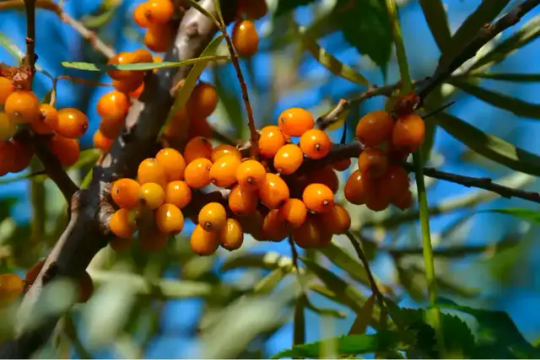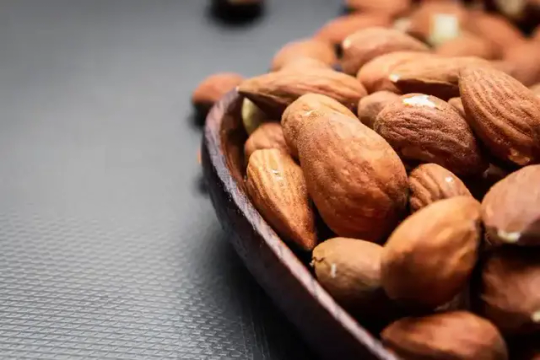Don't wanna be here? Send us removal request.
Text
Earn Money with Your Posts! Dlikes.com rewards you for every post, comment, reaction, and referral. Start earning points and get paid today!

0 notes
Text
7 Amazing Matcha and Green Tea Benefits You Need to Know!
Discover matcha and green tea benefits: from green tea shot drink and latte with matcha recipes to green tea ice cream matcha. Is green tea healthy ?
1 note
·
View note
Text
What Is Beer Yeast? 7 Powerful Facts You Must Know Discover what is beer yeast and its vital role in brewing. This tiny organism creates alcohol, carbonation, and unique beer flavors!

0 notes
Text
What Is Turmeric? A Golden Spice with a Rich History and Many Benefits

Discover what is turmeric: a golden spice with a rich history, vibrant flavor, and health benefits like anti-inflammatory properties
1 note
·
View note
Text
Sea Buckthorn: The Golden Berry of the Himalayas
Sea buckthorn (Hippophae rhamnoides) is a deciduous shrub known for its bright orange berries and spiky branches. Often referred to as the "Holy Fruit of the Himalayas," sea buckthorn has been revered for centuries for its nutritional and medicinal properties. Native to Europe and Asia, this resilient plant thrives in harsh conditions, from sea coasts to high-altitude mountain slopes. In recent years, sea buckthorn has gained global attention for its rich nutrient profile and potential health benefits, leading to its incorporation into various food products, cosmetics, and supplements.
Botanical Characteristics
Sea buckthorn belongs to the Elaeagnaceae family and is characterized by its narrow, silvery-green leaves and dense clusters of berries that ripen in late summer to early autumn. The shrub can grow up to 6 meters in height and is highly adaptable, tolerating a wide range of soil types and climatic conditions. Its extensive root system not only anchors it firmly but also contributes to soil stabilization, making it valuable for erosion control.
Geographic Distribution
While sea buckthorn is native to the cold-temperate regions of Europe and Asia, it has been introduced to North America for its ornamental value and environmental benefits. The plant is particularly abundant in the mountainous regions of China, Russia, and Mongolia, as well as along the coastal areas of Scandinavia and the Baltic states. Its ability to withstand temperatures ranging from -43°C to 40°C allows it to flourish in diverse environments.
Historical Uses
raditional Medicine
Sea buckthorn has a long history of use in traditional medicine systems such as Ayurveda and Tibetan medicine. Ancient texts describe its application in treating various ailments, from digestive disorders to skin conditions. The Greeks used sea buckthorn leaves as fodder for horses to promote weight gain and a shiny coat, which is reflected in its Latin name "Hippophae," meaning "shiny horse."
Historical Significance
In Russia and China, sea buckthorn was considered a vital resource during times of scarcity. Its berries were consumed to prevent scurvy due to their high vitamin C content. In Mongolia, warriors reportedly used sea buckthorn oil to heal wounds and boost stamina. The plant's resilience and nutritional value made it a symbol of vitality and endurance in various cultures.
Nutritional Profile
Sea buckthorn berries are a powerhouse of nutrients, containing a unique combination of vitamins, minerals, antioxidants, and fatty acids.
Vitamins and Minerals
The berries are exceptionally rich in vitamin C, with concentrations exceeding those found in oranges by up to ten times. They also contain significant amounts of vitamin E, vitamin K, and B-complex vitamins like B1, B2, and folic acid. Essential minerals such as potassium, calcium, magnesium, iron, and phosphorus are present, contributing to the overall nutritional value.
Omega Fatty Acids
One of the most remarkable aspects of sea buckthorn is its content of all four omega fatty acids: omega-3, omega-6, omega-7, and omega-9. Omega-7, or palmitoleic acid, is relatively rare in the plant kingdom and is known for its role in skin health and mucous membrane integrity.
Antioxidants
Sea buckthorn berries are rich in flavonoids, carotenoids, and phenolic compounds, which act as antioxidants. These substances help neutralize free radicals, reducing oxidative stress and potentially lowering the risk of chronic diseases.
Health Benefits
Skin Health
The high concentration of omega-7 fatty acids and antioxidants in sea buckthorn oil makes it beneficial for skin health. It promotes skin hydration, elasticity, and regeneration. Topical applications can aid in healing wounds, burns, and skin conditions like eczema and dermatitis. The oil is readily absorbed, providing nourishment and protection against environmental damage.
Cardiovascular Health
Sea buckthorn's omega fatty acids, particularly omega-3 and omega-6, contribute to cardiovascular health by regulating cholesterol levels and improving arterial function. The antioxidants help prevent the oxidation of LDL cholesterol, a key factor in atherosclerosis development.
Immune System Support
The abundance of vitamin C and other antioxidants strengthens the immune system. Regular consumption of sea buckthorn products may enhance the body's ability to fight infections and recover from illnesses.
Digestive Health
Sea buckthorn has been used to alleviate gastrointestinal issues such as ulcers, acid reflux, and inflammation. Its anti-inflammatory properties soothe the digestive tract lining, while the fatty acids promote mucous membrane health.
Industrial Applications
Food Industry
Sea buckthorn berries are processed into juices, jams, purees, and dietary supplements. The tart flavor, similar to sour orange or mango, makes it a unique ingredient in beverages and confectioneries. The high nutrient content adds value to health foods and functional beverages.
Cosmetic Industry
The cosmetic industry utilizes sea buckthorn oil in skincare and haircare products. Its rejuvenating properties make it a popular ingredient in creams, lotions, serums, and shampoos. The oil helps reduce signs of aging, promotes skin repair, and protects against UV radiation.
Pharmaceuticals
Pharmaceutical applications of sea buckthorn include its use in topical ointments for wound healing and oral supplements for various health conditions. Research is ongoing into its potential therapeutic effects in treating cardiovascular diseases, diabetes, and even certain types of cancer.
Cultivation and Harvesting
Growing Conditions
Sea buckthorn is a hardy plant that prefers well-drained, sandy soils with full sun exposure. It is drought-resistant and can tolerate saline soils, making it suitable for cultivation in marginal lands. The plant is dioecious, meaning male and female flowers grow on separate plants. For berry production, a ratio of one male to six or eight female plants is recommended.
Harvesting Methods
Harvesting sea buckthorn berries is labor-intensive due to the thorny branches and delicate nature of the fruit. Traditional methods involve hand-picking, which ensures the highest quality but is time-consuming. Mechanical harvesting techniques are being developed, such as shaking the branches over collection nets or freezing the berries on the branch before shaking them off.
Environmental Impact
Sea buckthorn cultivation has positive environmental implications. Its extensive root system prevents soil erosion and contributes to soil fertility through nitrogen fixation. The plant is also used in reforestation and land reclamation projects.
Challenges and Considerations
Sustainability
While sea buckthorn offers numerous benefits, sustainable cultivation practices are essential to prevent overharvesting and habitat disruption. Implementing proper agricultural methods ensures the long-term availability of this valuable resource.
Allergies and Side Effects
Although sea buckthorn is generally safe for consumption and topical use, some individuals may experience allergic reactions. It is advisable to conduct a patch test before using sea buckthorn oil on the skin. Those with gallbladder or liver conditions should consult a healthcare professional before consuming sea buckthorn products due to its potential effects on bile secretion.
Market Trends
The global market for sea buckthorn is expanding, driven by increased consumer awareness of its health benefits. Demand is growing in the nutraceutical, cosmetic, and functional food industries. However, market fluctuations and supply chain challenges can affect availability and pricing.
Conclusion
Sea buckthorn stands out as a remarkable plant with a rich history and a promising future. Its exceptional nutritional profile and wide-ranging health benefits make it a valuable addition to diets and wellness routines. As research continues to unveil its potential, sea buckthorn is poised to play a significant role in promoting health and sustainability. Whether in the form of a refreshing juice, a nourishing oil, or a dietary supplement, the golden berry of the Himalayas offers a natural way to enhance well-being.
https://vitaminssuperfoods.com/sea-buckthorn-revealed-5-powerful-benefits-for-skin-and-hair/
#how to use sea buckthorn oil on face#how to use sea buckthorn oil on hair#is sea buckthorn oil good for skin#sea buckthorn juice#Sea Buckthorn
1 note
·
View note
Text
The Ultimate Guide to Royal Jelly: Benefits, Uses, and Everything You Need to Know

Royal jelly, a unique substance produced by honeybees, has intrigued researchers and health enthusiasts for years. Used as the primary food source for queen bees, royal jelly is packed with nutrients that contribute to its impressive health benefits for humans as well. In this guide, you’ll learn everything about royal jelly, from its health benefits and how it’s made to its potential applications in wellness and nutrition.
1 note
·
View note
Text

#typesofcinnamon#cinnamonplant#iscinnamonsweet#cinnamonstickapple#cinnamonoil#cinnamonteabenefits#cinnamonsugar#cinnamonstick#cinnamonforweight#cinnamonforhair#iscinnamongluten
1 note
·
View note
Text

#seabuckthornberry#seabuckthornjuice#seabuckthornoilskinbenefits#seabuckthornbestskinever#isseabuckthornoilcomedogenic#howtouseseabuckthornoilonface#isseabuckthornoilgoodforskin#howtouseseabuckthornoilonhair
1 note
·
View note
Text
#echinacea plant#echinacea benefits for skin#echinacea when pregnant#echinacea side effects#echinacea for allergies#echinacea pills
1 note
·
View note
Text

#best inositol supplement#how much inositol for weight loss#how much inositol per day for fertility#inositol how long to work#inositol in food#inositol what is#inositol when pregnant#inositol with choline#inositol with or without food#what is myo inositol#when to take inositol for weight loss
1 note
·
View note
Text

#Choline#choline benefits#sources of choline#choline deficiency#choline-rich foods#choline in diet#choline supplements#importance of choline#choline and brain health#choline intake#choline in pregnancy#choline metabolism#choline functions#choline recommendations
1 note
·
View note
Text
1 note
·
View note